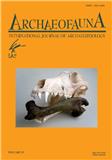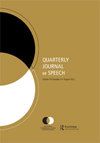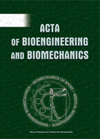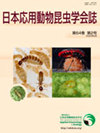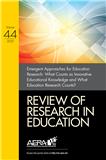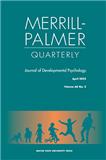
Iet Biometrics
期刊级别:SCI
- 国际刊号:2047-4938
- 国内刊号:--
- 期刊周期:--
- 主办单位:
 正刊通过真伪验证
正刊通过真伪验证 不成功全额退款
不成功全额退款
期刊介绍
SCIE期刊 学科领域:COMPUTER SCIENCE, ARTIFICIAL INTELLIGENCE
The field of biometric recognition - automated recognition of individuals based on their behavioural and biological characteristics - has now reached a level of maturity where viable practical applications are both possible and increasingly available. The biometrics field is characterised especially by its interdisciplinarity since, while focused primarily around a strong technological base, effective system design and implementation often requires a broad range of skills encompassing, for example, human factors, data security and database technologies, psychological and physiological awareness, and so on. Also, the technology focus itself embraces diversity, since the engineering of effective biometric systems requires integration of image analysis, pattern recognition, sensor technology, database engineering, security design and many other strands of understanding.
The scope of the journal is intentionally relatively wide. While focusing on core technological issues, it is recognised that these may be inherently diverse and in many cases may cross traditional disciplinary boundaries. The scope of the journal will therefore include any topics where it can be shown that a paper can increase our understanding of biometric systems, signal future developments and applications for biometrics, or promote greater practical uptake for relevant technologies:
Development and enhancement of individual biometric modalities including the established and traditional modalities (e.g. face, fingerprint, iris, signature and handwriting recognition) and also newer or emerging modalities (gait, ear-shape, neurological patterns, etc.)
Multibiometrics, theoretical and practical issues, implementation of practical systems, multiclassifier and multimodal approaches
Soft biometrics and information fusion for identification, verification and trait prediction
Human factors and the human-computer interface issues for biometric systems, exception handling strategies
Template construction and template management, ageing factors and their impact on biometric systems
Usability and user-oriented design, psychological and physiological principles and system integration
Sensors and sensor technologies for biometric processing
Database technologies to support biometric systems
Implementation of biometric systems, security engineering implications, smartcard and associated technologies in implementation, implementation platforms, system design and performance evaluation
Trust and privacy issues, security of biometric systems and supporting technological solutions, biometric template protection
Biometric cryptosystems, security and biometrics-linked encryption
Links with forensic processing and cross-disciplinary commonalities
Core underpinning technologies (e.g. image analysis, pattern recognition, computer vision, signal processing, etc.), where the specific relevance to biometric processing can be demonstrated
Applications and application-led considerations
Position papers on technology or on the industrial context of biometric system development
Adoption and promotion of standards in biometrics, improving technology acceptance, deployment and interoperability, avoiding cross-cultural and cross-sector restrictions
Relevant ethical and social issues
生物特征识别领域(基于个人的行为和生物特征自动识别个人)现已达到成熟水平,可行的实际应用不仅可能而且越来越可用。生物特征识别领域的特点是其跨学科性,因为虽然主要关注强大的技术基础,但有效的系统设计和实施通常需要广泛的技能,例如人为因素、数据安全和数据库技术、心理和生理意识等。此外,技术重点本身包含多样性,因为有效的生物特征识别系统的工程需要整合图像分析、模式识别、传感器技术、数据库工程、安全设计和许多其他理解。
该期刊的范围故意相对较广。虽然重点关注核心技术问题,但人们认识到这些问题可能本质上是多样化的,在许多情况下可能跨越传统的学科界限。因此,该期刊的范围将包括任何可以证明论文可以增加我们对生物识别系统的理解、预示生物识别未来发展和应用或促进相关技术更广泛实际应用的主题:
开发和增强单个生物识别模式,包括既定和传统模式(例如面部、指纹、虹膜、签名和手写识别)以及较新或新兴的模式(步态、耳朵形状、神经模式等)
多生物识别、理论和实践问题、实用系统的实施、多分类器和多模式方法
用于识别、验证和特征预测的软生物识别和信息融合
生物识别系统的人为因素和人机界面问题、异常处理策略
模板构建和模板管理、老化因素及其对生物识别系统的影响
可用性和面向用户的设计、心理和生理原理和系统集成
用于生物特征识别处理的传感器和传感器技术
支持生物特征识别系统的数据库技术
生物特征识别系统的实施、安全工程影响、智能卡及相关实施技术、实施平台、系统设计和性能评估
信任和隐私问题、生物特征识别系统的安全性和支持技术解决方案、生物特征识别模板保护
生物特征识别密码系统、安全性和与生物特征识别相关的加密
与法医处理的联系和跨学科共性
核心基础技术(例如生物识别技术(例如,图像分析、模式识别、计算机视觉、信号处理等)与生物识别处理的具体相关性可得到证明。
应用和应用主导的考虑
关于生物识别系统开发的技术或工业背景的立场文件
采用和推广生物识别标准,提高技术接受度、部署和互操作性,避免跨文化和跨部门限制
相关的伦理和社会问题
该刊已被国际权威数据库SCIE收录,该刊致力于发表经过严格同行评审的高质量原创文章,反映COMPUTER SCIENCE, ARTIFICIAL INTELLIGENCE领域的新进展、新技术、新成果,促进该领域科研交流和科研成果转化。该刊2023年影响因子为1.8,平均审稿速度为 33 Weeks ,近四年来没有被列入预警名单。如果您需要投稿发表服务及指导,可以联系我们的客服老师,我们专业专注服务期刊投稿协助10年,为您提供期刊投稿个性化定制服务,并且我们确保严格保密您的个人信息及稿件内容。
CiteScore(2024年最新版)
由Elsevier提出,用来评估期刊学术影响力的指标
- CiteScore:5.9
- SJR:0.583
- SNIP:0.957
CiteScore 排名
| 学科 | 分区 | 排名 | 百分位 |
| 大类:Computer Science 小类:Signal Processing | Q2 | 41 / 131 |
69% |
| 大类:Computer Science 小类:Computer Vision and Pattern Recognition | Q2 | 34 / 106 |
68% |
| 大类:Computer Science 小类:Software | Q2 | 143 / 407 |
64% |
CiteScore:由Elsevier集团开发,类似影响因子用来评估杂志期刊学术影响力的一个指标。CiteScore采用了四年区间来计算每个期刊的学术引用。CiteScore拥有自带数据库Scopus,Scopus主要两个特点:一是免费面向所有人开放;二是采用透明的操作与计算,具有极高的可重复性。
由中国科学院国家科学图书馆制定出来的分区
2023年12月升级版
| 大类学科 | 分区 | 小类学科 | 分区 | Top期刊 | 综述期刊 |
| 计算机科学 | 4区 | COMPUTER SCIENCE, ARTIFICIAL INTELLIGENCE 计算机:人工智能 | 4区 | 否 | 否 |
2022年12月升级版
| 大类学科 | 分区 | 小类学科 | 分区 | Top期刊 | 综述期刊 |
| 计算机科学 | 3区 | COMPUTER SCIENCE, ARTIFICIAL INTELLIGENCE 计算机:人工智能 | 4区 | 否 | 否 |
2021年12月旧的升级版
| 大类学科 | 分区 | 小类学科 | 分区 | Top期刊 | 综述期刊 |
| 计算机科学 | 3区 | COMPUTER SCIENCE, ARTIFICIAL INTELLIGENCE 计算机:人工智能 | 4区 | 否 | 否 |
2021年12月基础版
| 大类学科 | 分区 | 小类学科 | 分区 | Top期刊 | 综述期刊 |
| 工程技术 | 4区 | COMPUTER SCIENCE, ARTIFICIAL INTELLIGENCE 计算机:人工智能 | 4区 | 否 | 否 |
2021年12月升级版
| 大类学科 | 分区 | 小类学科 | 分区 | Top期刊 | 综述期刊 |
| 计算机科学 | 3区 | COMPUTER SCIENCE, ARTIFICIAL INTELLIGENCE 计算机:人工智能 | 4区 | 否 | 否 |
2020年12月旧的升级版
| 大类学科 | 分区 | 小类学科 | 分区 | Top期刊 | 综述期刊 |
| 计算机科学 | 4区 | COMPUTER SCIENCE, ARTIFICIAL INTELLIGENCE 计算机:人工智能 | 4区 | 否 | 否 |
基础版:将SCI期刊分为数学、物理、化学、医学、环境科学与生态学、生物、农林科学、工程技术、地学、地学天文、社会科学、管理科学及综合性期刊13个大类学科,再根据各大类期刊3年的平均影响因子进行划分。前5%为该类1区、6%~20% 为2区、21%~50%为3区,最后50%为4区,由高到低呈现金字塔状。
升级版:收录期刊涵盖了自然科学期刊(SCIE)、社会科学期刊(SSCI)和ESCI收录的中国期刊(自科+社科)(不包含A&HCI期刊和ESCI国外期刊)。从2022年起将只发布升级版。升级版涵盖254个小类的18个大类。为了更好描述期刊的主题表现,升级版设计了“期刊超越指数”取代影响因子指标。期刊超越指数,即本刊论文的被引频次高于相同主题、相同文献类型的其它期刊的概率。
JCR分区(2023-2024年最新版)
由科睿唯安公司(原为汤森路透)制定
| 按JIF指标学科分区 | 收录子集 | 分区 | 排名 | 百分位 |
| 学科:COMPUTER SCIENCE, ARTIFICIAL INTELLIGENCE | SCIE | Q3 | 136 / 197 |
31.2% |
| 按JCI指标学科分区 | 收录子集 | 分区 | 排名 | 百分位 |
| 学科:COMPUTER SCIENCE, ARTIFICIAL INTELLIGENCE | SCIE | Q4 | 152 / 198 |
23.48% |
JCR分区是由科睿唯安公司(原汤森路透,2016年易主科睿唯安)每年发布的,设置了254个具体学科,根据每个学科分类按照期刊当年的影响因子高低将期刊平均分为4个区,分别为Q1、Q2、Q3和Q4,各占25%。JCR分区包括自然科学(Science Edition)和社会科学(Social Sciences Edition)两个版本。其中,JCR-Science涵盖来自83个国家或地区、约2000家出版机构的8500多种期刊,覆盖176个学科领域。JCR-Social Sciences涵盖来自52个国家或地区、713家出版机构3000多种期刊,覆盖56个学科领域。
- 看看上一本期刊:Pediatric Dermatology
- 看看下一本期刊:Southern Medical Journal
期刊推荐

- Dance Research Journal
- 期刊级别:SCI
- 主办单位:UNITED STATES
- 周期: --
- 国际刊号:0149-7677
- 国内刊号:--

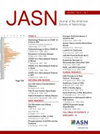
- American Journal Of Nephrology
- 期刊级别:SCI
- 主办单位:
- 周期: --
- 国际刊号:0250-8095
- 国内刊号:--


- Cancer Biology & Therapy
- 期刊级别:SCI
- 主办单位:UNITED STATES
- 周期: --
- 国际刊号:1538-4047
- 国内刊号:--


- Studi Storici
- 期刊级别:SCI
- 主办单位:
- 周期: --
- 国际刊号:0039-3037
- 国内刊号:--



